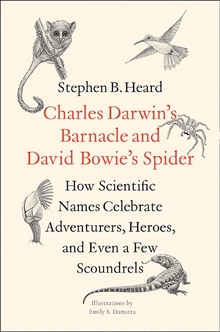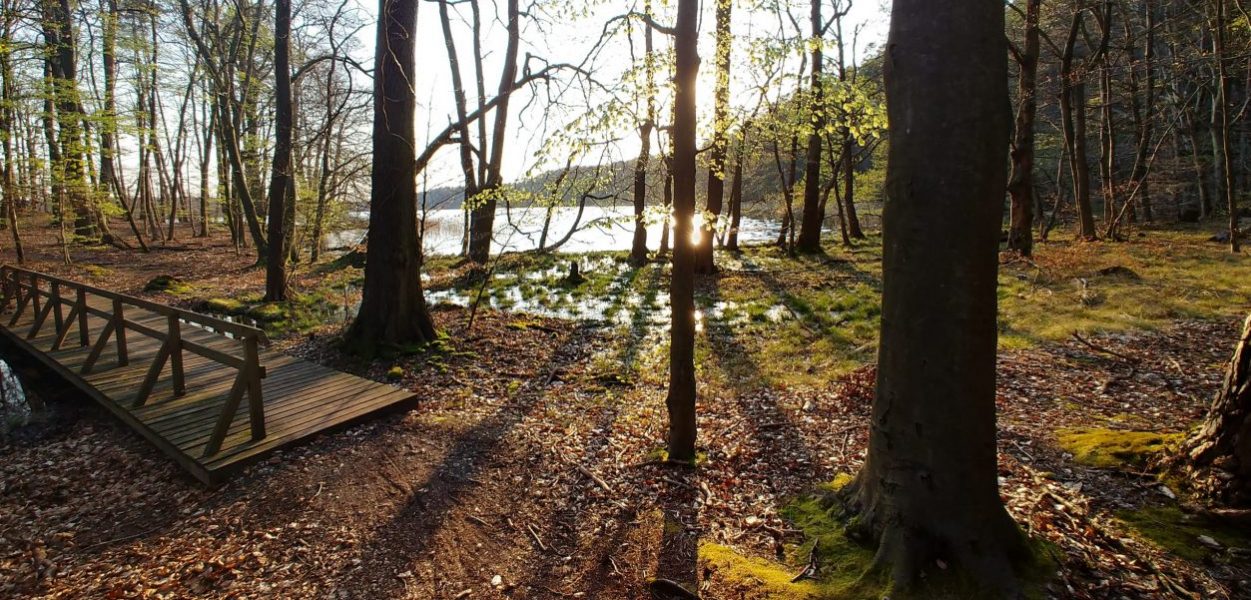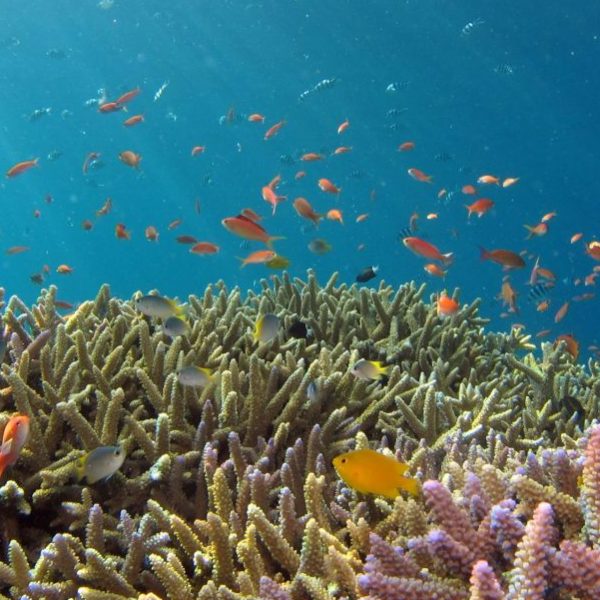Lessons from a Little Fish
Stephen B. Heard—
In northeastern Germany, about seventy-five kilometers north of Berlin, a little lake sits nestled in the woods. In the lake’s depths swim little fish—a dwarf cisco, Coregonus fontanae. In the fish’s name, a story is tucked away.

Coregonus fontanae is one of a pair of cisco species in Lake Stechlin. Around the world, ciscoes (like many other fish) have evolved pairs of ecologically distinct species sharing lakes—in this case, the shallow-water Coregonus albula and its descendent species, the deeper-water Coregonus fontanae. Coregonus albula is widespread across northern Europe, but Coregonus fontanae appears only in the roughly four square kilometers of Lake Stechlin. It looks a lot like its ancestor, except for its dwarfism, and it was formally described and named only in 2003.
Michael Schulz and Jörg Freyhof, the biologists who discovered and named the new cisco species, had a choice. They could have based the species’s scientific name on geography—Coregonus stechlinensis, anyone? Or they could have chosen a name that was more descriptive, like Coregonus minimus. Instead, they chose an eponymous name (one based on the name of a person). Eponymous names are common in biology—consider, for instance, the flowering tree Magnolia (for Pierre Magnol, an eighteenth-century French botanist), or the lemur Microcebus berthae (for the Malagasy primatologist Berthe Rakotosamimanana). Naming a species eponymously is an opportunity to be creative. It’s an opportunity to express one’s interests, one’s admiration, or one’s love for the eponymous person (occasionally, even, one’s disdain for the eponymous person). It’s an opportunity, too, to teach—because the name can draw attention to the eponym. That’s what happened for me with Coregonus fontanae.
Schultz and Freyhof chose the name Coregonus fontanae to honor the German novelist and poet Theodor Fontane (1819–1898). Fontane was born in Neuruppin, not far at all from Lake Stechlin, and his novels expressed his love for the people and landscapes of northeastern Germany. His last novel, Der Stechlin, is set by the lake; so there’s a direct tie between the fish and the novelist. If that were all there was to it, I’d be pleased enough by Schultz and Freyhof’s naming. But there’s more to Fontane’s story, including a lesson about persistence and hope. And whether the namers intended it or not, Coregonus fontanae is well suited to carry that story.
Fontane published his first work of prose at age twenty. It was a short story about a young woman who lives with her blind brother and falls in love with a local preacher. Fontane was thrilled with his accomplishment. In his memoir he describes seeing his story in the pages of Berlin Figaro: “I was as if stunned, and had every reason to be so . . . . I had been promoted to a writer of stories.” But Fontane didn’t get to bask in immediate adoration. As the historian Gordon Craig put it,
The mawkishness of this tale, and the interspersed verses that accompany it, is equalled by the lameness of its plot and the inertness of the style in which it is told, and [the protagonists] Clärchen and her brother are both so colourless that no one could have guessed that their creator had a future as a writer.
Ouch.
Fontane kept writing, though—publishing poetry, taking a job with the Prussian intelligence service writing propaganda, and writing travel books about Britain and his native Brandenburg. It wasn’t until he was fifty-seven years old that he returned to his avocation as a “writer of stories”—publishing his first novel in 1878. He would become known as a fine novelist, with a reputation for strongly written female characters and complex exploration of Prussian social systems. His novels were widely read and critically acclaimed—all because he didn’t give up.
Life is full of criticism and full of rejection. Scientists like me know this well. Reviewers criticize the words we toiled over. Journals reject our papers; publishers reject our book proposals; hiring committees reject our job applications. Science has no monopoly on rejection, though; a pitcher’s first fastball may be crushed over the fence, and the kiln may shatter a first stab at pottery. Fontane’s journey from mawkish tale to success as a novelist has an important lesson for everyone: don’t give up after criticism, after failure, after rejection. First attempts often fall flat; and we grow as scientists, writers, and people through our responses to the difficulties we encounter.
What about Coregonus fontanae? Its origin as a distinct species was never assured. That’s because it arose from its ancestor within the confines of Lake Stechlin, through a process we call ecological speciation. Many local populations begin this process: exposed to slightly different conditions, they begin to accumulate genetic differences from other members of their species. But without sharp geographic boundaries to isolate them, those diverging populations often collapse back into conformity with their ancestor. Genes that confer a local advantage, you see, can be swamped as locally adapted individuals mate with the more common variants around them. Ecological speciation often fails. Perhaps—in fact, most likely—it failed repeatedly in Lake Stechlin before succeeding with Coregonus fontanae.
I’d never heard of Theodor Fontane, or his story of persistence, until I happened across Coregonus fontanae. Some scientists dislike eponymous naming, arguing that all names should be descriptive and that eponymous names become uninteresting as soon as we’ve forgotten their eponyms. To me, though, it’s the opposite: an eponymous name is a thread waiting to be tugged on, a blaze suggesting a path to be followed. An eponymous name is an opportunity to learn, and I’m glad to have encountered the failure, and the success, of Theodor Fontane.
If your first try at something falls flat, think of Coregonus fontanae—and Theodor Fontane.
Stephen B. Heard is professor of biology at the University of New Brunswick in Canada. He is the author of The Scientist’s Guide to Writing: How to Write Easily and Effectively throughout Your Scientific Career.
Further Reading:



























